
POLLINATOR HABITAT PILOT PROJECT
PA TURNPIKE ROADSIDE, PA
McCormick Taylor supported the Pennsylvania Turnpike Commission (PA Turnpike) on the development of its Pollinator Habitat Pilot Project.
THE CHALLENGE
Almost 90% of flowering plant species need pollinators to reproduce. Native bees in particular contribute over $3 billion in U.S. crop pollination annually. However, pollinators and their habitat are rapidly declining due to habitat destruction, extensive chemical use, invasive species encroachment, and other mitigating factors. Pollinator habitat provides year-round support to all lifecycle stages of an insect pollinator. The PA Turnpike believes that “responsibility matters,” aims to become America’s First Sustainable Superhighway by 2040 and adopted the United Nations’ 17 Sustainable Development Goals encompassing many critical issues. With hundreds of miles of vegetated roadsides, the PA Turnpike saw an opportunity to make a difference in declining pollinator populations by establishing pollinator designated habitat. Additionally, converting maintained roadsides to pollinator habitat reduces mowing requirements, reducing carbon dioxide emissions, and providing long-term financial benefits. The PA Turnpike developed the Pollinator Habitat Pilot Project to evaluate different seed mixes, rates, and management practices before further incorporating pollinator habitat into their roadway system.
HOW WE HELPED
McCormick Taylor worked with the PA Turnpike to:
- Develop a site assessment methodology
- Research best practices
- Determine pilot plots to test various seed mixes and management practices
- Develop site plans
- Develop seed mixes in coordination with seed suppliers
- Design and implement a monitoring program
- Assess and analyze progress
Upon initiating the project, there were a number of considerations, such as:
- What flowers benefit the at-risk pollinators and aid in beautification of the roadsides but are not too showy to cause a safety hazard of admiring traveling public to pull over on the roadsides?
- What flowering plants are native so they are adapted to Pennsylvania’s soils and constantly changing weather conditions but do not become a “buffet” for deer and attract them closer to the roadway?
- What mix of flowering plants can effectively outcompete invasive species, consistently provide blooms from early spring to late fall, and do not outcompete eachother?
The establishment of pollinator habitat involved many different disciplines and departments within the PA Turnpike and their contractors. Grass has been mowed at the Turnpike for over 80 years. The outreach efforts needed to inform various PA Turnpike staff and contractors that work on the roadsides that the pollinator habitat now growing in what had been a manicured lawn is intentional and includes a different management plan. Website content was developed, social media posts were prepared, many photos were taken, press releases were issued, and signage was designed. Controlling undesirable species early in their growth was also critical to meeting the long-term goals of pollinator habitat establishment. The selection of equipment capable of cutting and mulching tall vegetation down to 10-18 inches was not a common request. However, establishing thatch and leaving stems for overwintering pollinator habitat and ensuring seed contact with the soil were key components of the project.
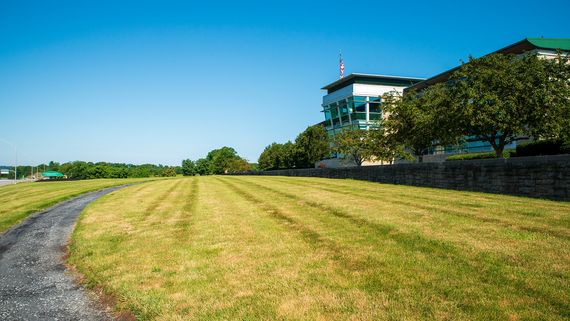
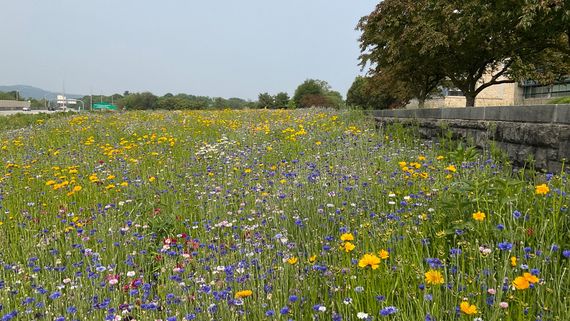
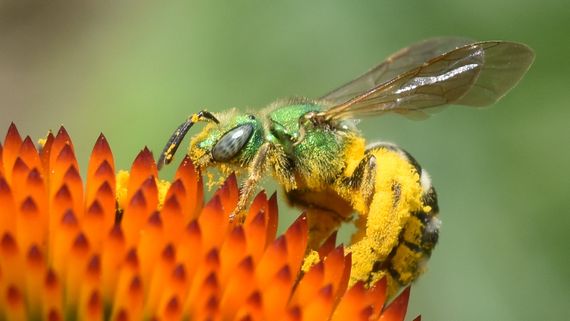
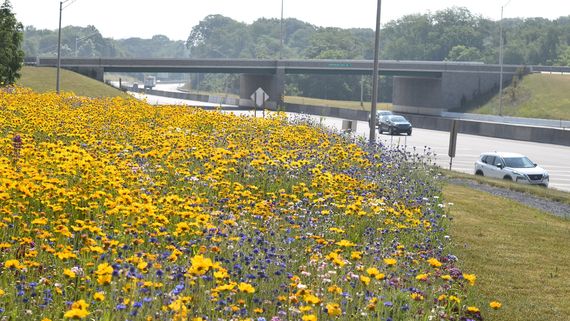
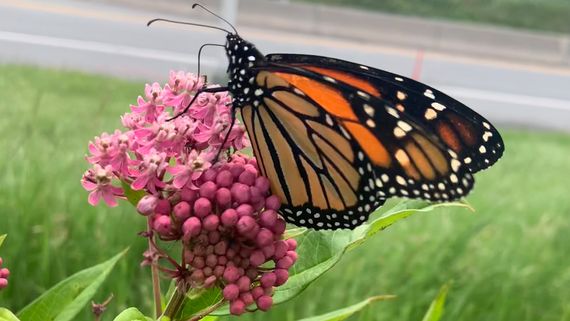
RESULTS
Public response to the pollinator habitats has been overwhelmingly positive. Two sites were constructed in 2022, and three additional locations were added in 2023 totaling 16 acres of pollinator habitat pilot plots. Post-construction monitoring included identifying undesirable vegetation and desirable seed mix vegetation, monitoring pollinating insects, providing recommendations for undesirable vegetation management, and assessing yearly progress. Driven by results of the pilot project, PA Turnpike pollinator habitat guidance will be developed. The project has also successfully fulfilled the needs of local pollinator populations. As flowers bloom in the spring, the buzz of hundreds of pollinators busy at work can be heard in areas that were previously maintained lawns devoid of insect activity. All five locations provided nectar to adult monarch butterflies and other pollinators, and at least one of the site locations was host to monarch eggs and caterpillars.
AWARDS
2024 Diamond Award, ACEC/PA